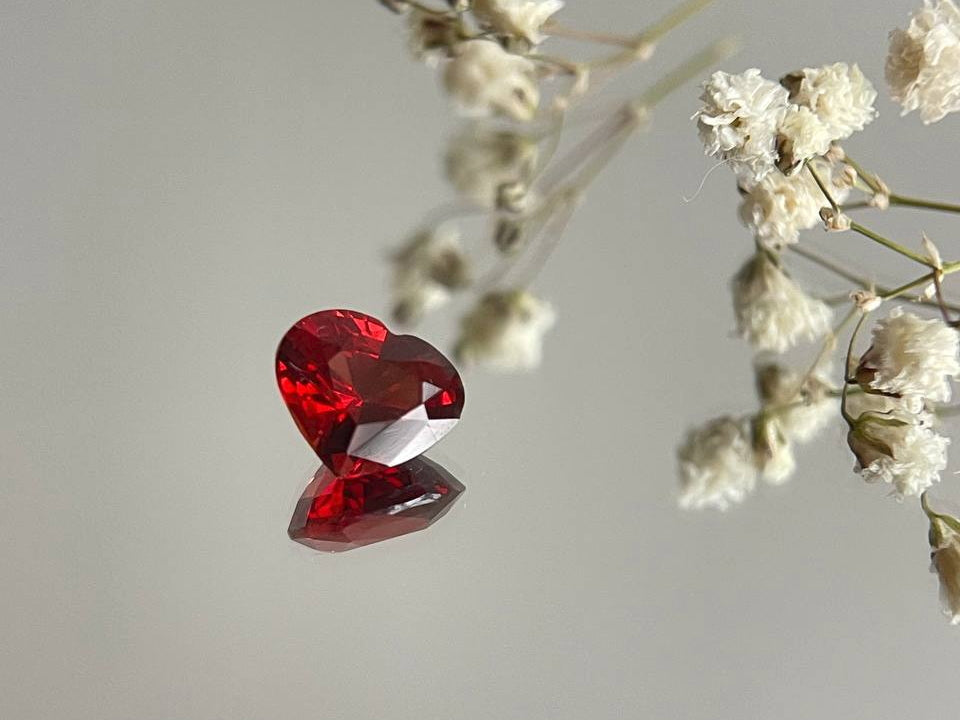
Heart Cut: Romance or Necessity?
Share
Having worked with a vast array of gemstones, I’ve come to appreciate that a gem’s beauty isn’t just about appearance—it’s about precision, craftsmanship, and, at times, problem-solving. The heart cut is a perfect example of how artistry meets technical expertise.
Though commonly associated with love and romance, the heart shape is not merely a sentimental choice. In many cases, it is selected for practical reasons, dictated by the unique characteristics of the rough stone.
Why Opt for a Heart Cut?
💎 Exceptional Brilliance
When executed correctly, a heart-cut gemstone can exhibit brilliance comparable to that of a round brilliant. The way light interacts with its facets creates remarkable fire and sparkle, making it one of the most visually striking cuts available.
💎 Enhanced Color Saturation
This cut is particularly effective for gemstones with rich, saturated hues—rubies, spinels, and tourmalines, for instance. The precise arrangement of facets intensifies the perception of color, giving the stone a deeper, more vivid appearance.
💎 Cleverly Conceals Imperfections
A well-planned heart cut can help minimize the visibility of inclusions or internal fractures. By strategically removing or repositioning problematic areas, skilled cutters can maximize clarity without sacrificing too much weight.
Challenges of Cutting a Heart-Shaped Gemstone
While the heart cut is undeniably beautiful, it presents significant challenges for lapidaries.
🔹 High Material Loss
This cut is among the most wasteful in terms of rough utilization. As much as 50% of the original material may be lost in the cutting process, making it a high-risk choice, particularly for rare or expensive rough stones.
🔹 Precision Is Critical
Achieving perfect symmetry is one of the greatest challenges of the heart cut. Uneven lobes, an improperly formed cleft, or a dull point can all negatively impact the stone’s overall appearance and light performance.
🔹 Requires an Expert Cutter
This is not a cut for the inexperienced. The complexity of balancing proportions, optimizing weight retention, and maximizing brilliance means that only a highly skilled lapidary can execute it flawlessly. A single miscalculation can lead to an unbalanced or lifeless gem.
The Evolution of the Heart Cut
The heart-shaped gemstone has a history dating back centuries. The earliest recorded reference to a heart-cut diamond appears in a 1463 letter from Duke Galeazzo Maria Sforza of Milan to Nicodemo Tranchedini da Pontremoli. By the 16th century, heart-cut diamonds had gained prominence among European royalty, with notable examples appearing in the collections of Henry VIII, Mary Stuart, and Cardinal Richelieu, who famously gifted a 20-carat heart-shaped diamond to his king.
Over time, advancements in cutting techniques have refined the proportions of the heart cut, enhancing both its brilliance and appeal. Today, it remains a timeless and highly coveted choice for those seeking a gem that embodies both technical mastery and romantic symbolism.

Unfortunately, we don’t have images or surviving examples of these early heart-shaped gems, but based on descriptions, they were likely more pear-shaped than what we recognize today. The deep cleft at the top—now an essential feature—only became a standard part of the cut in the 20th century.

Interestingly, the heart symbol itself has undergone a remarkable evolution. Early depictions, dating back to the Bronze Age, bore little resemblance to love or human anatomy. The familiar symmetrical red heart we recognize today didn’t appear until the 15th century, first surfacing in playing cards.
The Heart Cut: A Masterpiece of Both Art and Science
Is the heart cut purely about romance? Far from it. Beneath its sentimental allure lies a meticulous and highly technical approach to gem cutting. Every heart-shaped stone is a testament to both artistic vision and mathematical precision—a true feat of craftsmanship.
For those who choose this cut, whether for its symbolism or its brilliance, one thing is certain: a heart-cut gemstone is never just another pretty stone. It embodies skill, history, and ingenuity—the very elements that make gemology such an extraordinary field.

Olga Bachurina,
Co-Founder of Venus in Libra,
Certified by GIA & Gübelin Academy



